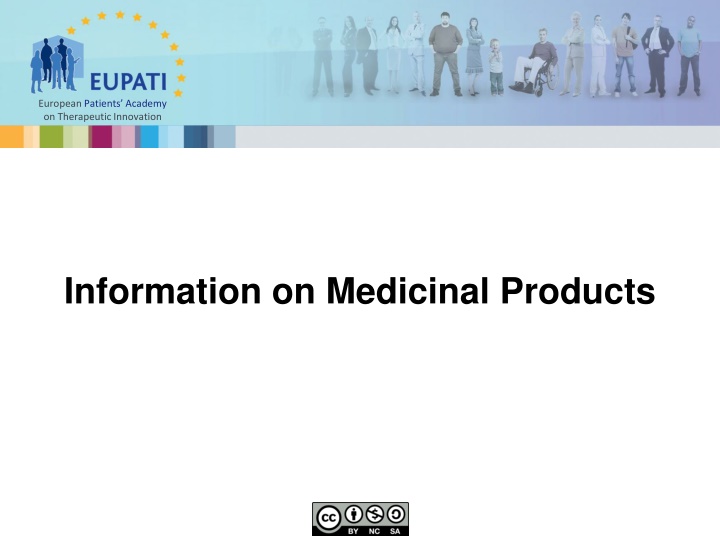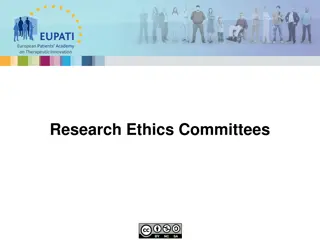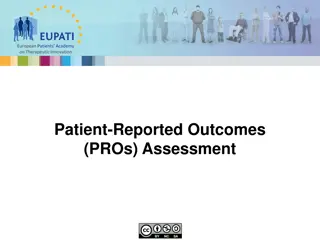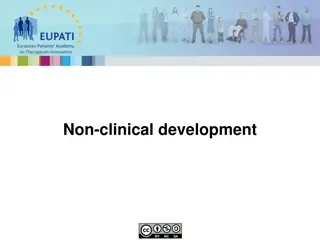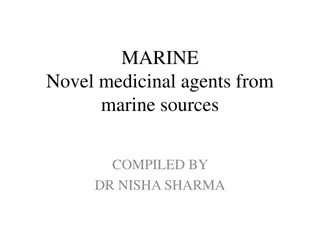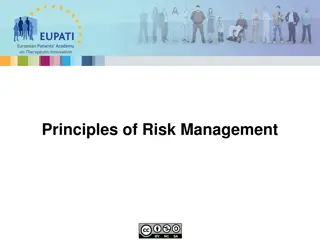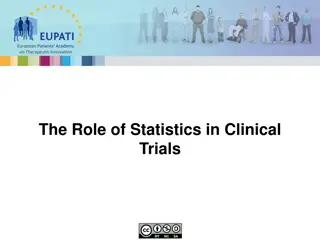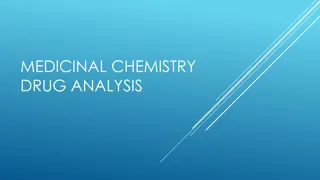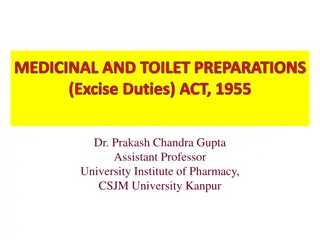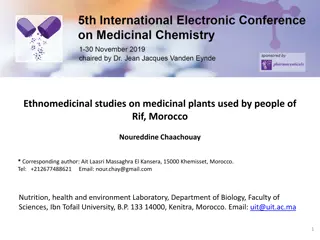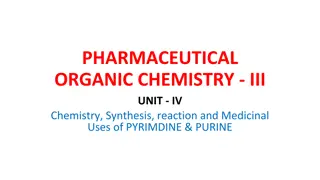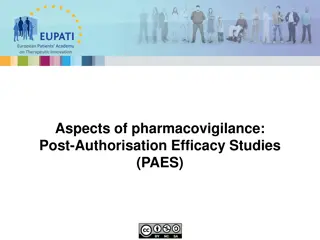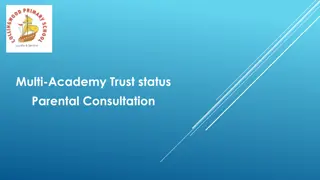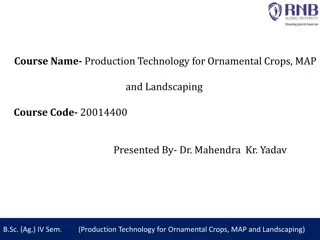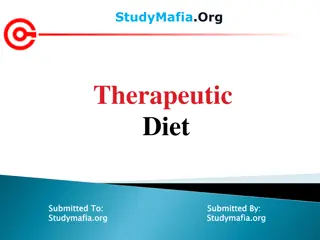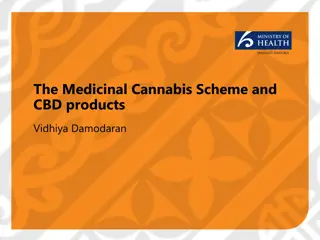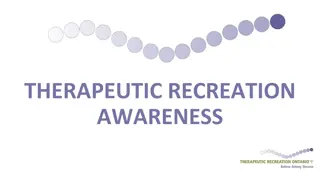European Patients Academy on Therapeutic Innovation: Information on Medicinal Products
Accurate and up-to-date information on medicinal products is crucial for patients and healthcare professionals. The European Patients Academy on Therapeutic Innovation provides insights into topics such as package leaflets, labelling requirements, and information to be provided according to the Directive 2001/83/EC. Understanding these aspects helps patients make informed decisions regarding their medication use.
Download Presentation

Please find below an Image/Link to download the presentation.
The content on the website is provided AS IS for your information and personal use only. It may not be sold, licensed, or shared on other websites without obtaining consent from the author.If you encounter any issues during the download, it is possible that the publisher has removed the file from their server.
You are allowed to download the files provided on this website for personal or commercial use, subject to the condition that they are used lawfully. All files are the property of their respective owners.
The content on the website is provided AS IS for your information and personal use only. It may not be sold, licensed, or shared on other websites without obtaining consent from the author.
E N D
Presentation Transcript
European Patients Academy on Therapeutic Innovation Information on Medicinal Products
Information on Medicinal Products European Patients Academy on Therapeutic Innovation Accurate and up-to-date information on medicinal products is essential for both patients and healthcare professionals. When a person is ill, they may go to their doctor and receive a prescription for medication. The patient might have a number of questions on their mind, such as: Can I take the medicine with food? Can I take the medicine if I m pregnant? Will this medicine interact with other medicines I m taking? 2
Package Leaflet (PL) European Patients Academy on Therapeutic Innovation These questions will be answered by the package leaflet (PL), a folded leaflet that comes inside the package with the medicine. The content of the PL is governed by European Union legislation, which sets out detailed requirements on medicines information. 3
Information to be Provided European Patients Academy on Therapeutic Innovation Directive 2001/83/ECsets out the requirements for four different types of information to be provided: 1. Labelling on package (immediate and carton); 2. Summary of Product Characteristics (SmPC) directed towards healthcare professionals; 3. Package Leaflet (PL) directed towards the patient; 4. European Public Assessment Report (EPAR). There are key requirements in the European Directive on how to prepare this information. 4
Labelling European Patients Academy on Therapeutic Innovation The text that appears on the label (inner and outer packaging) of medicines is regulated similarly to the package leaflet. The labelling gives information relevant for the patient as well as others in the distribution chain, for example, the doctor or pharmacist. For the patient, there may be information on special storage conditions, for example, that it should be stored in a refrigerator or protected from light. 5
European Patients Academy on Therapeutic Innovation For the pharmacy, there is information to identify the product in terms of name and active substance, route of administration, etc. In addition, batch numbers are important in case a batch has to be recalled by the manufacturer. It is important that labelling can be read by all patients. The outer carton of a medicine must include the required information. Labelling on packages must also be both in print and Braille text for those who are visually impaired. 6
Additional Information European Patients Academy on Therapeutic Innovation Labelling requirements are harmonised within the EU. In addition an individual Member State may decide to include in the label one or more of the following: the price of the medicinal product, the reimbursement conditions, the legal status, medicinal product subject to medical prescription or medicinal product not subject to medical prescription OTC authenticity and identification for example the bar code. This additional information is included inside a single boxed area, the Blue Box, located on the outer carton in order to be clearly seen. 7
The Package Leaflet (PL) European Patients Academy on Therapeutic Innovation The pharmaceutical company is required to provide a package leaflet containing all information from the SmPC that is necessary and useful for the patient. The order and content of the PL is strictly regulated. The basic guiding philosophy for the production of a PL is that, after reading it, the patient should fully understand: what the medicine is, what it is used for, and how to use it. 8
Product X European Patients Academy on Therapeutic Innovation The sections of a package leaflet for product X are as follows: What X is and what it is used for; What you need to know before you take (or use) X for example, contra-indications, interactions with food or other medicines, precautions; How to take/use X; Possible side effects; How to store X; Contents of the pack and other information such as manufacturer and marketing authorisation holder. 9
Information on Adverse Drug Reactions European Patients Academy on Therapeutic Innovation The information on potential side effects, or adverse drug reactions (ADRs) is an important element of the PL. At the time of approval of a new medicine, not all ADRs may be known. Rarer ADRs may first occur when larger patient populations are taking the medicine. It is important to involve the patients in the surveillance of new ADRs. Patients have the option of reporting adverse effects to the doctor or to the pharmacy. In many EU member states, patients may even report directly to the regulatory authorities. 10
Reporting Adverse Drug Reactions European Patients Academy on Therapeutic Innovation The pharmacovigilance legislation requires that patients be informed on the importance of reporting new ADRs. A standard text must appear in all PLs, as shown below: If you get any side effects, talk to your doctor, pharmacist, or nurse. This includes any possible side effects not listed in this leaflet. You can also report side effects directly via the national reporting system. By reporting side effects, you can help provide more information on the safety of this medicine . 11
Involving Patients in Reviewing the Package Leaflet (PL) European Patients Academy on Therapeutic Innovation The company should consult with appropriate patient groups to ensure the product information, both content and layout, is legible, clear, and easy to use. This is so patients can locate important information within the package leaflet, understand it, and act appropriately. One way to do this is by performing a user testing of the package leaflet. For this purpose, the European Commission has issued a Guideline on the readability of the labelling and package leaflet of medicinal products for human use . 12
Summary of Product Characteristics (SmPC) European Patients Academy on Therapeutic Innovation The company must provide a Summary of Product Characteristics (SmPC) which is an essential document in the approval process for a new medicine. The SmPC contains necessary information needed by healthcare professionals to inform the patients about the benefits and the risks of the chosen medicine. Detailed guidance on use is included along with relevant warnings on what to do and what to avoid during the medication period. The SmPC is kept up to date with information on ADRs, safety, and benefit-risk balance of the medication. 13
SmPC Management European Patients Academy on Therapeutic Innovation 14
European Public Assessment Reports(EPARs) European Patients Academy on Therapeutic Innovation The EPAR provides public information on a medicine, including how it was assessed, together with a public- friendly summary. The intention is to provide transparent and useable information. These public documents contain a summary of the information within the dossier and the result of the assessment carried out by the competent authorities. Some of the information is regarded as confidential and is not included, e.g. detailed information on the manufacturing of the products. EPARs are updated to reflect the latest regulatory information on medicines. 15
Changes in Information on Medicinal Products European Patients Academy on Therapeutic Innovation Relevant content in the SmPC and the PL cannot be changed without submitting a variation application . Such changes can be initiated by the company as well as the regulatory authorities, for example, in case of new knowledge on product safety or efficacy. Regulatory initiatives may arise from what are known as referrals . Referrals may be initiated by EU Member States or the Commission, for instance, and involve scientific considerations in EMA committees. 16
Monitoring a New Medicine European Patients Academy on Therapeutic Innovation A new medicinal product should be closely monitored after it becomes available to patients. Larger patient populations are exposed to the medicine only when it is on the market. Rarer ADRs may only be spotted after marketing. Both the regulatory agencies and the pharmaceutical companies collect ADR reports. 17
Periodic Safety Update Reports (PSURs) European Patients Academy on Therapeutic Innovation Based on the post-authorisation information compiled in Periodic Safety Update Reports (PSURs), the benefit- risk balance is regularly re-considered and re-assessed. Any new safety information resulting from these re- assessments can lead to updates of the SmPC and the Package Leaflet (PL). 18
Re-assessing the Benefit-risk Balance European Patients Academy on Therapeutic Innovation After ADR reporting, the regulators may want to initiate a safety referral to re-assess the benefit-risk balance of the medicinal product and to update the product information when needed. This could be for new or older products. In such cases, a harmonised EU action is important. All patients and doctors should have access to any new information on benefits or risks. 19
Urgent Union Procedure European Patients Academy on Therapeutic Innovation In the case of new and serious ADRs, it may be that urgent action is required. One possibility in such cases is to start the Urgent Union Procedure . This procedure may be initiated by an EU Member State or by the Commission. The result can be major changes in the conditions for marketing authorisation, the suspension or even the revocation of the marketing authorisation. This kind of urgent union safety procedure will generate a safety communication published by the EMA, and the update of the product information of the medicinal product(s) affected. 20
Patient Involvement European Patients Academy on Therapeutic Innovation The EMA invites patients and consumer representatives to review information on medicines published by them, such as public-friendly summaries of EPARs and PLs. The purpose is to have feedback on whether the information is readable and understandable for the target population. 21
References European Patients Academy on Therapeutic Innovation European Medicines Agency (2014). EMA/403106/2014 Mandate and objectives for the EMA working party on Quality Review of Documents (QRD). Retrieved 11 September 2015, from http://www.ema.europa.eu/docs/en_GB/document_librar y/Other/2014/07/WC500169651.pdf European Medicines Agency (2012). Draft presentation: Summary of product characteristics. Retrieved 11 September 2015, from http://www.ema.europa.eu/docs/en_GB/document_librar y/Presentation/2012/05/WC500127919.pdf 22
European Patients Academy on Therapeutic Innovation European Medicines Agency (2014). EMA/637573/2014 Revised framework on the interaction between the European Medicines Agency and patients and consumers and their organisations. Retrieved 11 September 2015, from http://www.ema.europa.eu/docs/en_GB/document_librar y/Other/2009/12/WC500018013.pdf European Medicines Agency (2014). EMA/652164/2014 Annex II: EMA activities where patients and consumers are involved. Retrieved 11 September 2015 from http://www.ema.europa.eu/docs/en_GB/document_librar y/Other/2014/12/WC500179568.pdf 23
European Patients Academy on Therapeutic Innovation European Medicines Agency (2013). EMA/413422/2013 rev 1. Incorporating patients views during evaluation of benefit-risk by the EMA Scientific Committees. Retrieved 11 September, 2015, fromhttp://www.ema.europa.eu/docs/en_GB/document_li brary/Other/2014/09/WC500173508.pdf European Medicines Agency (2011). EMA/351803/2010 The role of patients as members of the EMA Human Scientific Committees. Retrieved 11 September, 2015, fromhttp://www.ema.europa.eu/docs/en_GB/document_li brary/Other/2011/12/WC500119614.pdf 24
European Patients Academy on Therapeutic Innovation European Medicines Agency (2006). EMEA/126757/2005 Reflection paper: EPAR summary for the public. Retrieved 11 September, 2015, fromhttp://www.ema.europa.eu/docs/en_GB/document_li brary/Regulatory_and_procedural_guideline/2009/10/W C500004173.pdf 25
